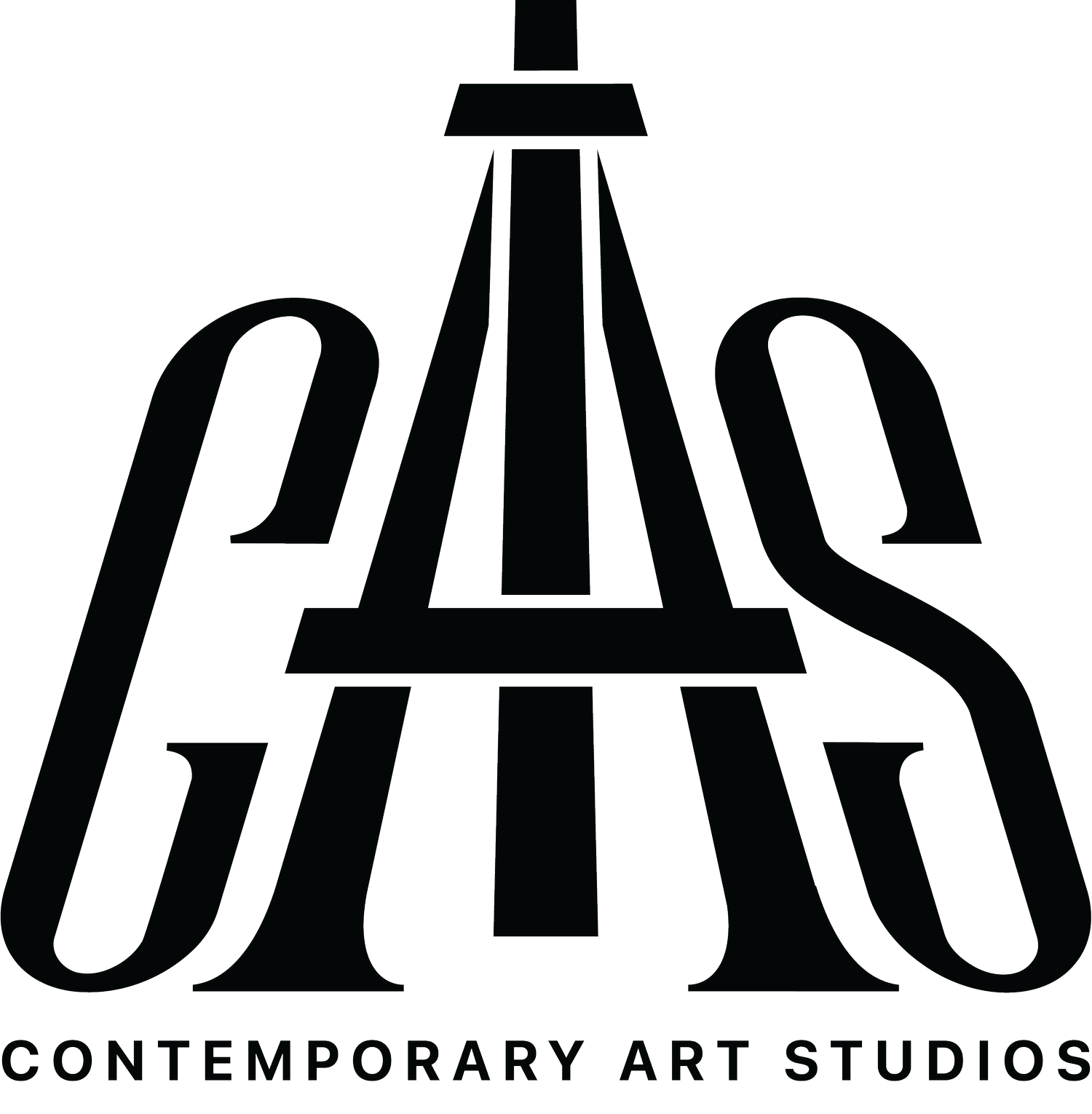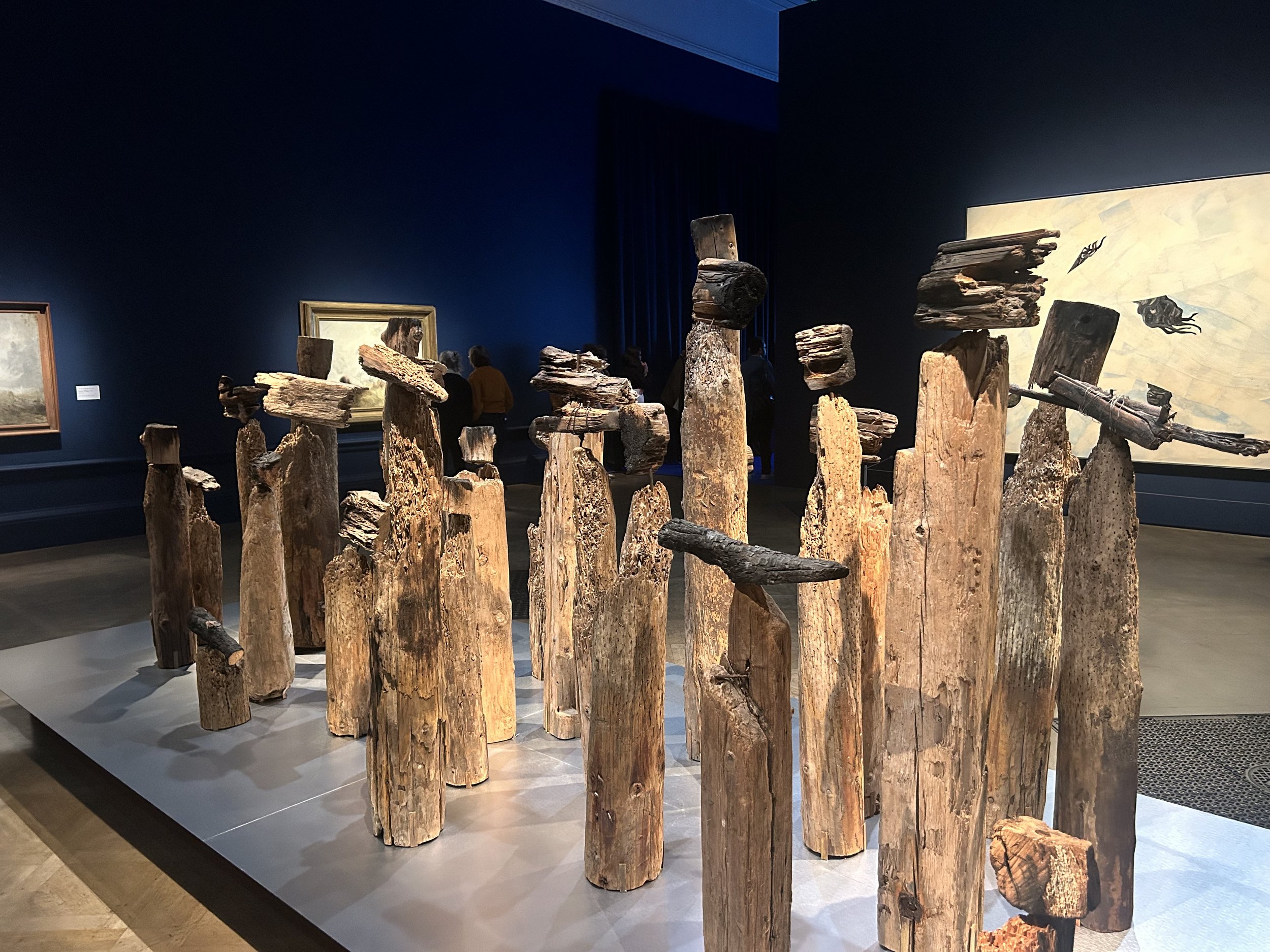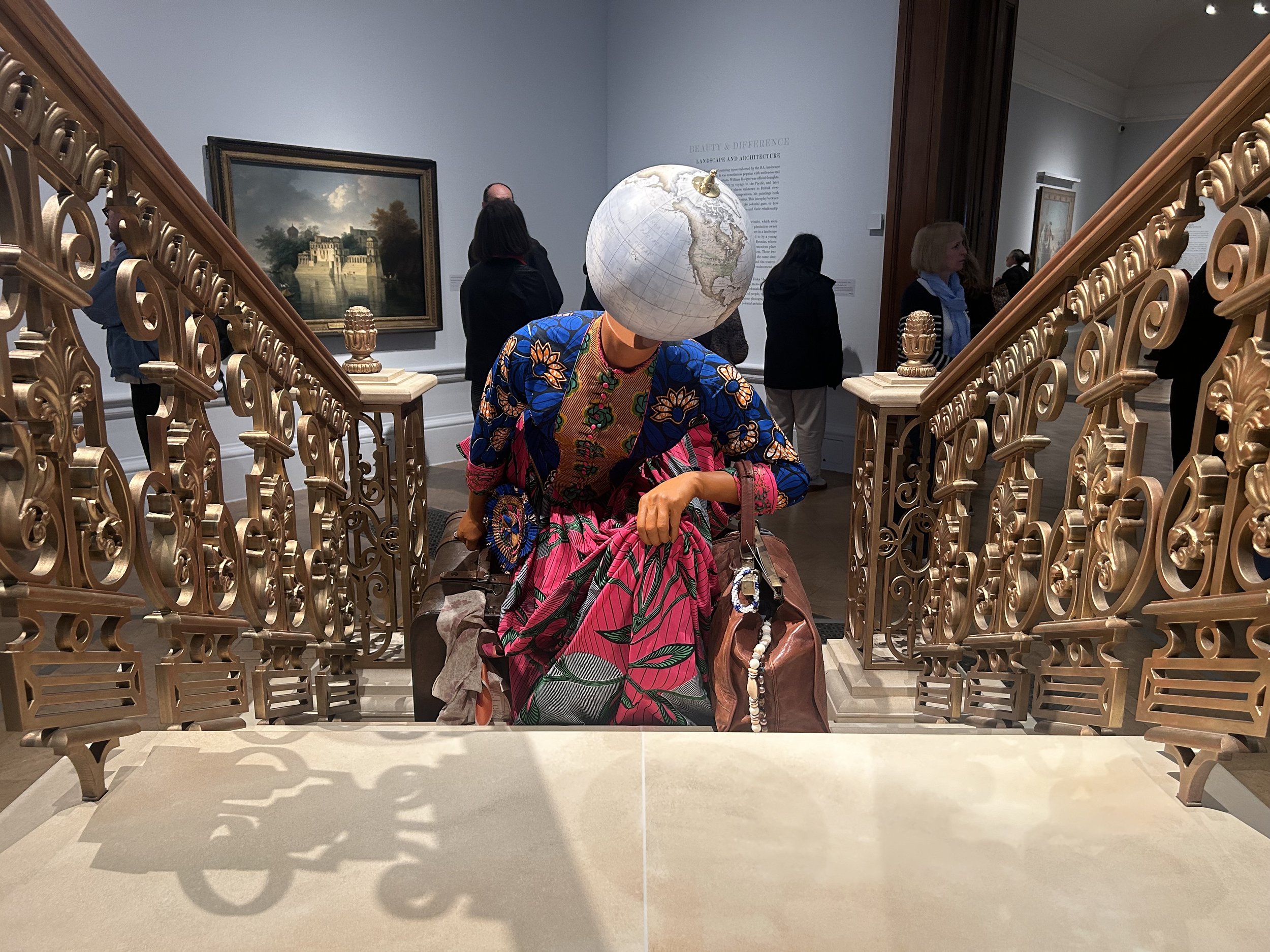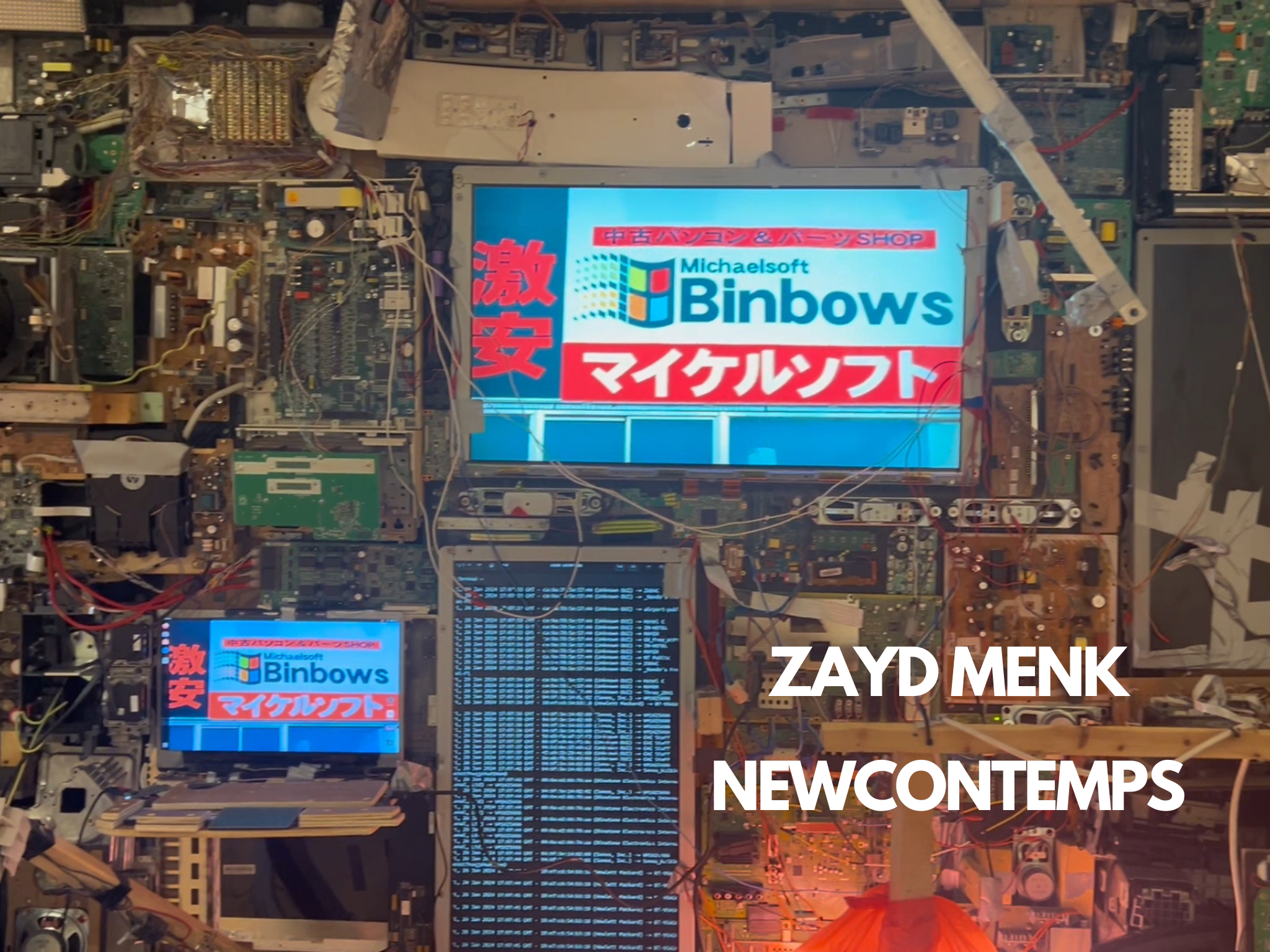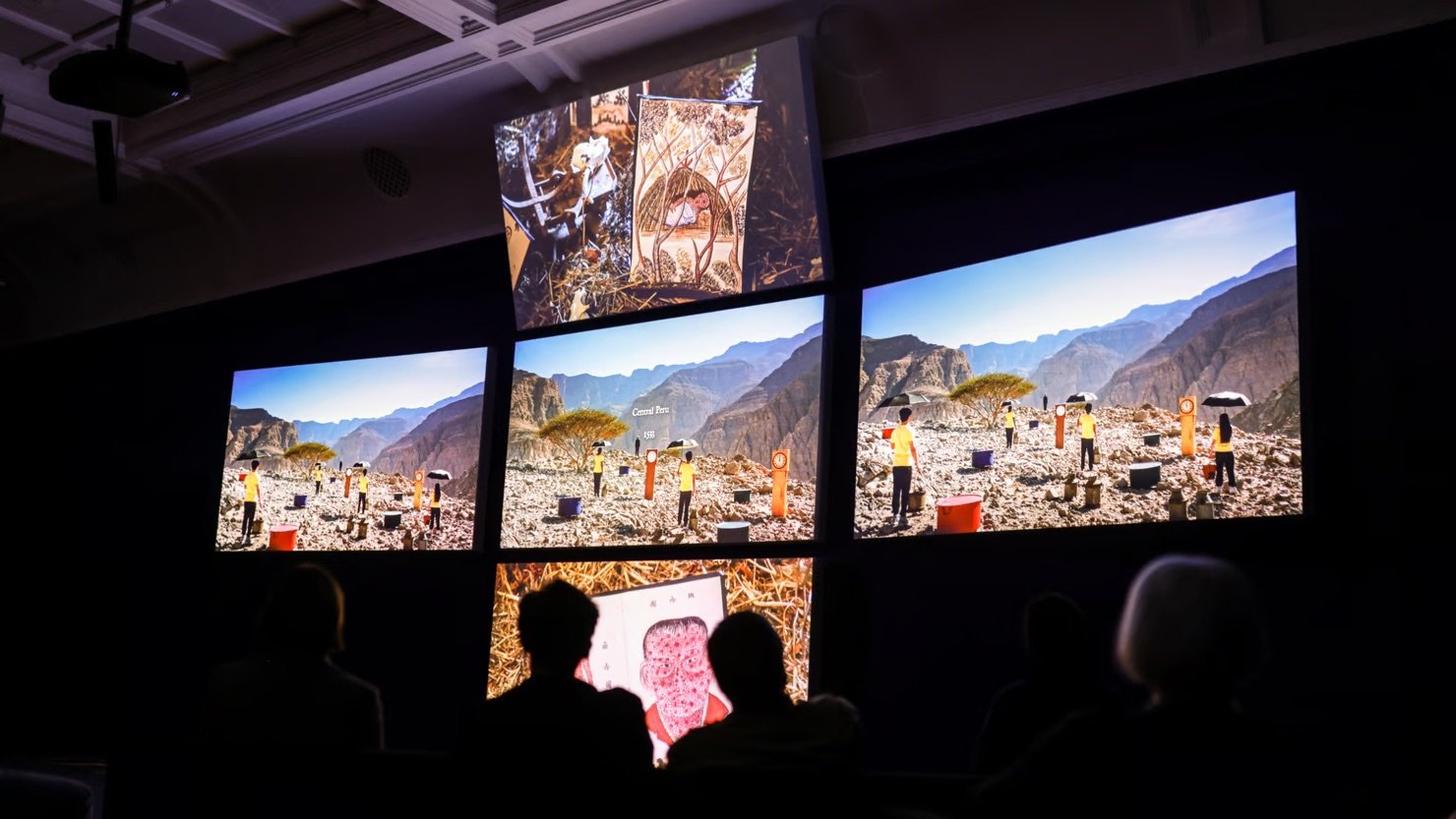Fleet Art Fair: Everything You Need to Know
Fleet Art Fair
About Fleet Art Fair:
Fleet Art Fair is an exciting new contemporary art event curated by Contemporary Art Studios. Taking place from October 10th to 13th, 2024, at 8-12 New Bridge Street, London, this fair is designed to showcase the work of both emerging and established artists. Our mission is to create a dynamic platform where creativity and innovation are celebrated, offering a unique and engaging experience for art lovers, collectors, and the general public.
Curators: Contemporary Art Studios
As curators, Contemporary Art Studios is dedicated to elevating artistic voices and connecting them with broader audiences. We carefully select and curate the artists and works featured in Fleet Art Fair, ensuring a diverse and compelling range of contemporary art is on display.
Event Times:
PV October 10th: 6:00 PM – 9:00 PM
October 11th: 11:00 AM – 6:00 PM
October 12th: 12:00 PM – 8:00 PM
October 13th: 10:00 AM – 5:00 PM
Ticket Information:
Tickets for Fleet Art Fair are priced at just £4, making it an affordable way to experience some of the most exciting contemporary art today.
Where to Get Tickets:
You can purchase tickets online through the following websites:
For Artists and Organizations:
Are you an artist interested in showcasing your work at Fleet Art Fair? Or an organization looking to collaborate? We would love to hear from you!
For General Inquiries and Artist Applications: info@contemporaryartstudios.co.uk
Fleet Art Fair Email: fleetartfair@gmail.com
Fleet Art Fair Instagram: @fleetartfair
Artist Application Information: Artenda Application
Event Venue:
Location: 8-12 New Bridge Street, London, EC4V 6AL
Additional Information:
For more details about the show, you can visit our official event page here:
Fleet Art Fair is more than just an art exhibition; it’s a celebration of creativity and a platform for artists to shine. Don’t miss out on this exciting event—get your tickets today, and if you're an artist or organization interested in participating, reach out to us to get involved.
We look forward to seeing you there!
Exploring Black Art: Reflections from the Royal Academy Exhibition
I had the privilege of attending an exhibition at the Royal Academy that exclusively featured Black artists. It was a profound experience, as I witnessed the meticulous attention to detail in every piece, along with the rich historical context behind each artwork. The exhibition showcased a diverse range of artworks spanning different periods, from classical to contemporary.
One piece that particularly caught my eye was Kerry James Marshall's "Scipio Moorhead, Portrait of Himself, 1776, 2007." This acrylic on PVC panel painting depicts Scipio Moorhead, an enslaved artist from Boston in the late eighteenth century. Marshall beautifully portrays Moorhead as if he were painting a self-portrait, with a sketched image of Phillis Wheatley in the background. The piece prompts viewers to ponder the concept of freedom and its true meaning.
Kerry James Marshall
Benjamin West
Another captivating painting was Benjamin West's "The Death of General James Wolfe (1727-1759), 1779." This oil on canvas masterpiece, originally exhibited in 1771, portrays the Battle of Quebec and highlights the entanglement of British colonialism with Indigenous communities in North America. The presence of a First Nations figure kneeling on the left side of the canvas serves as a poignant reminder of Indigenous participation in geopolitics during the eighteenth century.
Kehinde Wiley
In contrast to these historical pieces, I was intrigued by Kehinde Wiley's "Portrait of Kujuan Buggie, 2024" and Yinka Shonibare's "Woman Moving Up, 2023." Wiley's portrait, created using street casting, challenges traditional notions of portraiture by featuring a model adopting poses from historical portraits. Shonibare's sculpture, made of fibreglass mannequins and Dutch wax-printed cotton textile, explores themes of identity and migration in a contemporary context.
Yinka Shonibare
While most pieces seamlessly fit into the exhibition's theme, there were a few that felt out of place. For instance, Joshua Reynolds' "Portrait of George, Prince of Wales, later King George IV (1762-1830), c. 1787" seemed disconnected from the exhibition's focus on Black art. Despite its historical significance, the lack of information about the Black attendant depicted in the painting left me feeling unsettled.
Joshua Reynolds
As I navigated through the various rooms of the exhibition, each section offered a unique perspective on Black art and its evolution over time. From "Sites of Power" to "Tradition and Appropriation," the exhibition provided a comprehensive exploration of Black artists' contributions to the art world.
In conclusion, the exhibition at the Royal Academy served as a powerful celebration of Black art and its significance in shaping cultural narratives. It highlighted the complexities of identity, history, and representation, inviting viewers to engage in meaningful conversations about race, power, and creativity.
Rooms and Their Significance:
Sites of Power: Portraits and Presence This section delves into eighteenth-century Britain's colonial expansion and its impact on Black sitters depicted in portraits. It showcases Black individuals who lived in Georgian Britain as a result of the plantation economy, shedding light on their lives and contributions to society.
Tradition and Appropriation Examining connections between artists from different countries and time periods, this gallery explores the borrowing of motifs and themes in art. It challenges notions of cultural authenticity and highlights the complexities of artistic influence and interpretation.
Conflict and Ambition Focusing on conflicts and geopolitical tensions of the eighteenth and nineteenth centuries, this section presents artworks that reflect on empire, race, and power dynamics. It raises questions about the role of art in shaping public discourse and historical narratives.
Landscape and Architecture Exploring the representation of landscapes and architectural motifs in art, this gallery examines how artists depicted colonial territories and their relationship to the British Empire. It offers insights into the colonial gaze and its impact on artistic representations of foreign lands.
Prints and Poetry Highlighting the role of printmaking and poetry in shaping public discourse, this section presents artworks that address themes of slavery, abolition, and racial identity. It underscores the importance of art in challenging prevailing narratives and advocating for social change.
Sculpture and Photography Featuring sculptures and photographs, this gallery explores the intersection of art, history, and identity. It examines how artists have used sculpture and photography to interrogate issues of race, representation, and memory.
Where to From Here? The final galleries reflect on the legacy of Black art and its ongoing relevance in contemporary society. They invite viewers to consider the future of Black art and its potential to inspire social and cultural transformation.
Yinka Shonibare CBE's "Suspended States" Exhibition: A Multifaceted Journey of Cultural Identity - Serpentine Gallery
Yinka Shonibare CBE's latest exhibition, "Suspended States," is a mesmerizing exploration of cultural identity in our ever-globalizing world. Born in London in 1962 and raised between London and Lagos, Shonibare's work encapsulates a postcolonial hybridity, drawing from theatrical, ironic, and tragicomic strategies to illuminate the dynamics of power performance.
The exhibition, which runs from April 12 to September 1, 2024, features a diverse array of artworks spanning sculptures, textiles, woodcuts, and more. What struck me most was the sheer diversity of materials on display, from intricate prints to striking sculptures. Each piece seemed to tell a unique story, weaving together narratives of migration, colonialism, and cultural exchange.
One particular highlight was the room dedicated to Shonibare's gas works projects. It was a poignant tribute to all the individuals who contributed to his artistic journey, and the gesture of giving everyone flowers added a touch of beauty and warmth to the space.
The turnout for the solo exhibition was impressive, with a vibrant crowd coming out to celebrate Shonibare's work. While not all pieces were available for acquisition, there were some prints that were simply too irresistible to pass up. I have a feeling they'll be snapped up quickly, so I'm glad I didn't hesitate.
"Suspended States" delves into themes of boundary suspension, whether psychological, physical, or geographical. Shonibare's exploration of public colonial statues, sites of refuge, and the legacy of war is both thought-provoking and timely. His use of African print as a symbol of the complex ties between Europe and Africa adds layers of meaning to each artwork.
Moreover, the exhibition sheds light on Shonibare's commitment to cultural and social exchange projects. From his Guest Projects programme in East London to the G.A.S. Foundation in Nigeria, his support of other artists is commendable and speaks to the power of collaboration in the art world.
As one of Britain's most celebrated contemporary artists, Shonibare's inclusion of CBE as part of his professional name is a nod to his complex relationship with British honours and the systems they represent.
In conclusion, "Suspended States" is not just an exhibition—it's a journey. It's a journey through layers of identity, history, and interconnectedness. It challenges us to question our assumptions and invites us to see the world through a different lens. And for that, I am grateful.
Contemporary Art Studios Presents: Residency Exhibition
Date: March 28th - March 30th, 2024
Location: Hackney Gallery, 1 Lower Clapton Road, London, E5 0NS
Contemporary Art Studios is delighted to announce its upcoming Residency Exhibition, showcasing the incredible works produced by our resident artists during their month-long residency. The exhibition will run from March 28th to March 30th at the Hackney Gallery, offering visitors a unique opportunity to experience the diversity and creativity of contemporary art.
Pablo (b. 1998): Pablo, a French artist originally from Guatemala, has found his artistic home in London. His practice, expressed through drawing, illustration, and sculpture, serves as a living intimate journal. Each work reflects his ever-evolving past, present, and future, drawing inspiration from memories, encounters, and human imperfections. Pablo's pieces are explosions of color and detail, inviting viewers into a world where reality and fantasy intertwine.
Louise Hapton (b. 2005): Louise Hapton, a young French writer and contemporary artist based in London, is a force to be reckoned with. At just 19 years old, Louise's artwork explores themes of identity, mental health, and personal narrative with depth and authenticity. Through her vivid 2D and 3D pieces, Louise takes viewers on a journey through her experiences as a young woman navigating hope, dreams, and wounds. Her literary pursuits further complement her artistic practice, adding layers of storytelling and introspection to her body of work.
Feifan Hu (b. 1998): Feifan Hu, a mixed-media textile artist and painter, brings a fresh perspective to the residency with her innovative approach to sculpture. Infusing her background in textiles with sculptural techniques, Feifan's work explores themes of culture, family, gender, and human-nature relationships. Her creations oscillate between vulnerability and defiance, capturing subtle emotions and stories through childlike characters and symbolic imagery.
Join us for an unforgettable exhibition that celebrates the power of contemporary art and the talent of our resident artists. Be sure to mark your calendars and experience the magic of creativity come to life at Hackney Gallery.
For more information, please contact us via email info@contemporaryartstudios.com
RSVP Private View Here
Exploring the Innovative Realm of Palmer Gallery: A Multidisciplinary Haven
Nestled in the heart of Lisson Grove, Palmer Gallery emerges as a beacon of artistic diversity and collaboration, redefining the traditional gallery experience with its inaugural launch. Founded by Lucas Giles, an esteemed academic and writer, alongside art advisor Will Hainsworth, Palmer Gallery stands as a testament to the evolving landscape of contemporary art.
Diverging from the conventional focus on painting, Palmer Gallery embraces cross-disciplinary art forms, inviting artists to explore a myriad of mediums including sculpture, video, sound, and textiles. The gallery's mission is to foster dialogue and experimentation, encouraging artists to transcend boundaries and forge new paths in their creative endeavors.
Housed within a historic former factory, Palmer Gallery boasts a captivating space adorned with tall ceilings and unique architectural features. From hidden side galleries to cupboard-like recesses, every nook and cranny of the gallery exudes an air of intrigue, providing the perfect backdrop for immersive installations and avant-garde exhibitions.
The inaugural show, "Field of Difference," sets the stage for Palmer's dynamic programming, featuring an eclectic array of works by emerging and established artists. From sculptural paintings crafted from colored ceramic slices to surreal CGI films exploring digital landscapes, each piece invites viewers on a journey of discovery and contemplation.
Looking ahead, Palmer Gallery promises a diverse lineup of exhibitions, including solo shows by promising talents and collaborative events bridging the worlds of art, fashion, music, and gastronomy. With a commitment to nurturing young artists and pushing the boundaries of artistic expression, Palmer Gallery emerges as a vibrant hub of creativity and innovation in the heart of London's art scene.
As Palmer Gallery embarks on its inaugural journey, it seeks to redefine the gallery experience, fostering an environment that is not only welcoming and inclusive but also fosters collaboration and dialogue among artists and art enthusiasts alike. With its bold vision and unwavering dedication to artistic excellence, Palmer Gallery is poised to leave an indelible mark on the cultural landscape of London and beyond.
Contemporary Art Studios Residency Program for Young Artists (Ages 16-25)
Are you a recent art graduate aspiring to refine your portfolio and navigate the art world? Look no further! Join our 4-week residency program, starting from February 21st to March 21st, with an exciting exhibition on the 5th week.
Application Deadline: February 17th
Program Overview:
Week 1: Discover Your Artistic Identity
Establish your artistic identity.
Craft your portfolio and artist statement.
Research your chosen themes and mediums.
Week 2: Painting Exploration
Dive into completed painting tasks.
Implement research findings from Week 1.
Week 3: Multi-Media/Sculpture Creativity
Explore multi-media and sculpture options.
Hands-on tasks guided by research.
Week 4: Exhibition Preparation
Complete all tasks.
Learn the essentials of exhibition preparation.
Understand promotion strategies.
Week 5: Grand Exhibition Day
Showcase your work in a one-day exhibition.
Invite friends and family to celebrate your artistic journey.
Residency Details:
Limited to 2 young adults.
Schedule: Mondays, Wednesdays, and Thursdays.
Location: London Hackney (Studio Access Only).
Cost:
All aspects of the program are free.
Participants cover specific materials not available in our studios.
Application Deadline: February 17th
Don't miss this opportunity to elevate your art career. To apply, send your portfolio and a brief introduction to info@contemporaryartstudios.com. We can't wait to welcome you to our creative space in Hackney! #ArtResidency #YoungArtists #HackneyArtScene
Osman Yousefzada: Unveiling Narratives through Textiles
Stepping into the New Camden Art Centre's NewContemps exhibition, my gaze was immediately drawn to the mesmerizing piece titled "Migrant Godxx II, 2021" by the artist Osman Yousefzada. The textile masterpiece, measuring 280 x 160 cm, commands attention and leaves an indelible impression from the moment you enter the room.
Upon delving into the world of Osman's artistry, I discovered a rich tapestry of storytelling intricately woven into his works. His practice revolves around a captivating blend of autobiography, fiction, and ritual, creating a narrative that transcends conventional artistic boundaries. Yousefzada's art is a poignant exploration of migration, class, and alternative masculine experiences, with a profound resonance with the socio-political issues of our time.
What makes Yousefzada's work truly stand out is its 'defiant' nature, as described by critics. The bodies represented in his pieces are not mere entities; they are part-objects that resist easy identification or conformity. Each element in his compositions seems to challenge established norms, inviting viewers to confront the complexities of identity and societal expectations.
Born in 1977 in Birmingham, England, Osman Yousefzada's artistic journey has taken a significant turn in recent years. Currently pursuing a Ph.D. at the Royal College of Art in London since 2021, he emerges from the esteemed institution as a thought leader in the contemporary art scene.
The piece "Migrant Godxx II, 2021" serves as a testament to Yousefzada's ability to communicate profound themes through the medium of textiles. Its visual allure is just the surface, as the threads tell stories of migration, class struggles, and alternative masculine experiences. This work is not merely an art object; it is a conversation starter, an exploration of identity in the face of societal expectations.
In conclusion, Osman Yousefzada's art is a compelling journey into the heart of human experiences, skillfully expressed through textiles. His work at the NewContemps exhibition left an indelible mark, prompting a reflection on the representation and rupture of migration, class, and alternative masculine experiences. As he continues his academic pursuit at the Royal College of Art, it is evident that Yousefzada is a force to be reckoned with in the realm of contemporary art.
Zayd Menk: A Visionary Fusion of Art and Technology
In the ever-evolving realm of contemporary art, Zayd Menk has emerged as a trailblazing artist, captivating audiences with his ingenious installations that seamlessly blend artistic expression with cutting-edge technology. Recently, I had the privilege of attending the groundbreaking exhibition, "55," featuring Menk and other emerging artists.
Zayd Menk's work stood out prominently, as he fearlessly delved into the world of technology, creating installations that push the boundaries of conventional artistic mediums. One cannot help but marvel at the intricacy with which he combines disparate pieces of equipment to construct thought-provoking compositions. His ability to transform the mundane into the extraordinary is nothing short of genius.
One particularly striking piece featured a desktop adorned with an array of technological components, each meticulously arranged to form a harmonious yet chaotic display. Menk's adeptness at marrying the aesthetic with the functional invites viewers to contemplate the intersection of art and technology in our rapidly advancing society.
Menk's installations serve as a testament to the evolving nature of art, where traditional boundaries are blurred, and new frontiers are explored. As a viewer, I found myself drawn into a realm where the familiar was reimagined, prompting reflection on the role of technology in our daily lives.
Beyond the visual spectacle, Zayd Menk's work raises poignant questions about the interconnectedness of art and technology. How does our relationship with technology shape our understanding of art, and vice versa? Menk's art challenges us to reconsider these dynamics, inviting a dialogue on the evolving landscape of creativity in the digital age.
In conclusion, Zayd Menk's contribution to the "55" exhibition exemplifies the spirit of innovation within the contemporary art scene. His ability to seamlessly integrate diverse elements into cohesive and thought-provoking installations establishes him as a visionary artist on the rise. As we navigate an era defined by technological advancements, Menk's work serves as a captivating reminder of the limitless possibilities that arise when art and technology converge.
End of Empire: A Personal Journey through History and Art
Walking into the Plymouth Box exhibition, I found myself captivated by Yinka Shonibare CBE RA's "End of Empire." What initially struck me as a visually compelling piece took on a profound depth as I delved into the historical and cultural layers woven into the artwork.
Before attending, I had little knowledge of the depth that "End of Empire" possessed in its historical context. Learning that it was commissioned by the imperial war museum added a weighty significance, making the experience more impactful. The fact that the piece was part of a major national arts program for the First World War centenary heightened my awareness of its connection to broader historical narratives.
The seesaw figures, dressed in 19th-century aristocratic clothing made from African batik textiles, brought an unexpected movement to the otherwise still sculptures. As I observed the tilting seesaw and the carefully posed figures, I felt a dynamic energy, as if frozen in a moment of history. Shonibare's ability to infuse movement into stillness added a layer of engagement that I hadn't anticipated.
The symbolism embedded in the artwork struck a chord with me. The globes representing the opposing sides of the war, adorned with world maps from 1917, were a powerful commentary on the enduring impact of WWI alliances. The seesaw, with its playful approach to questions of power and balance, provided a unique lens through which to contemplate resolution in the face of historical traumas.
Being in the North Hall of Plymouth, the setting itself became part of the narrative. The visual dialogue about decolonization felt not only relevant but essential, especially in a space intertwined with imperial ideals. The compass on the floor symbolizing Plymouth's historical role in colonial endeavors further connected the artwork to the city's past.
Shonibare's use of Dutch wax-printed cotton and his deliberate challenge to assumptions about cultural origins resonated with me personally. The complexity of cultural identity, as portrayed through the fabrics, mirrored the intricacies of my own understanding of history and representation. Shonibare's refusal to offer easy answers encouraged me to confront the cultural complexities highlighted in the artwork.
In conclusion, "End of Empire" became more than just an art piece for me; it became a personal journey through history and cultural introspection. Shonibare's masterful blend of historical narratives and thought-provoking symbolism provided a space for contemplation and reflection, leaving a lasting impression on my understanding of the past and its continued resonance in the present.
Exploring John Akomfrah's "Arcadia": A Cinematic Journey through Colonial Ecological Impact
Introduction: Recently, I had the privilege of attending an exhibition at The Box in Plymouth, featuring the remarkable work of British artist and filmmaker John Akomfrah. The centerpiece of the exhibit, a five-screen film installation titled "Arcadia," captivated me with its striking visuals and profound exploration of the ecological implications of colonialism.
The Cinematic Tapestry: "Arcadia" weaves together a rich tapestry of landscapes from around the globe, delving into the complex narratives of migration and the histories of Western colonization. The film skillfully reflects on The Columbian Exchange, a pivotal moment in the late 15th century that triggered a collision of ecosystems, resulting in environmental change, population growth, and the spread of disease.
Symbolism and Design: The cross-shaped installation serves as a symbolic representation of compass points, connecting to the global implications of colonization. It also stands as a potent symbol of imperialist invasion, emphasizing the impact of historical events on our present and future. Akomfrah's use of Plymouth as a central theme reinforces its significance as the epicenter of colonial adventure in the 16th century.
Narrative Depth: The film's soundtrack, featuring excerpts from "The African," a 19th-century opera depicting the fictional events in Vasco da Gama's life, adds a layer of historical depth. Through meticulous research and a poetic use of sound and image, Akomfrah crafts immersive experiences that invite viewers to engage with significant historical and social issues.
Akomfrah's Impactful Career: John Akomfrah, born in Accra, Ghana, has had a profound impact on contemporary art and moving image. His career spans decades, marked by compelling storytelling, innovative cinematic techniques, and thought-provoking explorations of migration, identity, and history. Akomfrah's involvement in the Black Audio Film Collective, founded in 1982, has left an indelible mark on British cinema.
Reflecting on "Arcadia": In a statement, Akomfrah shares his ironic detachment with the title "Arcadia," highlighting the European fantasy of a new beginning. The piece prompts viewers to consider the unintended consequences of migration and the complex nature of freedom in a world shaped by historical forces.
Pandemic Reflection: Akomfrah's journey in creating "Arcadia" began in 2019, with a significant pause during the COVID-19 lockdown. The artist reflects on the pandemic's timely reminder that powerful forces beyond human control shape our world. The decision to explore how the settling of the New World occurred not through battles but through a cocktail of viruses and germs adds a poignant layer to the narrative.
Conclusion: Attending John Akomfrah's "Arcadia" at The Box was a transformative experience, combining art, history, and cinema in a compelling narrative. The artist's ability to provoke reflection and dialogue on historical and social issues through immersive storytelling reinforces the enduring relevance of his work. As Akomfrah prepares to represent Great Britain at the 2024 Venice Biennale, "Arcadia" stands as a testament to the power of storytelling and the artist's impactful contribution to the world of contemporary art.
Exploring The Extraordinary: A Glimpse into "The Song of Psyche" Exhibition at Shtager & Sch Gallery
I recently had the privilege of attending the mesmerizing exhibition, "The Song of Psyche: Corners of a Soul's Otherworlds," featuring the works of Nicola Turner and Edward Bekkerman at Shtager & Sch Gallery on Margaret Street, Central London. This showcase of art proved to be a refreshing and captivating experience, marked by a harmonious interplay of dark and bright palettes, a diverse array of sculptures, and thought-provoking paintings.
The curator's meticulous curation played a pivotal role in creating an atmosphere charged with an eerie, fairy-tale-like energy as winter loomed. The anticipation transcended the mundane, inviting visitors to delve into the mysterious, uncanny, and enchanting aspects of the human condition.
As I strolled through the exhibition, the juxtaposition of seemingly opposite dreamscapes became apparent. The dialogue between these intuitive realms blurred the lines between reality and fantasy, offering a glimpse into uncharted territories of imagination. The curator's skillful arrangement guided me through a journey where the ordinary transformed into the extraordinary.
During a personal tour graciously provided by the gallery manager, I gained deeper insights into the nuances of the exhibition. The sense of nostalgia woven into the display was palpable, enhancing my connection with the art on a profound level.
Edward Bekkerman's paintings, characterized by abstract forms, beckoned me to decipher hidden messages beneath their surface. The enigmatic quality of his work added a layer of intrigue, prompting contemplation and interpretation.
Nicola Turner's sculptures, on the other hand, possessed a surreal quality that transported me to the set of a Spider-Man movie. The meticulous craftsmanship and imaginative design evoked a sense of wonder, making it a highlight of the exhibition.
"The Song of Psyche" succeeded in offering a unique and refreshing artistic experience. The exhibition not only showcased the individual brilliance of Turner and Bekkerman but also highlighted the curator's talent in orchestrating a seamless dialogue between diverse artistic expressions. In a world where the ordinary can often go unnoticed, this exhibition served as a reminder that there's magic in embracing the mysterious and exploring the corners of a soul's otherworlds.
Youtube Review: https://youtu.be/uFtwBJAvjI4
A Transformative Journey: Exploring the Evolution of El Anatsui's Artistry
In my recent exploration of El Anatsui's exhibition, titled "TimeSpace," I was immersed in the dynamic evolution of this distinguished contemporary artist's career. Renowned for his iconic hanging sculptures created from countless aluminum bottle-tops, Anatsui's artistic journey unfolds as a captivating narrative. The exhibition not only showcased his monumental installation, "Behind the Red Moon," transforming Tate Modern's Turbine Hall with two of the largest bottle-top works ever made, but also offered a curated sampling of the diverse materials and stratagems he has employed throughout his prolific career.
Anatsui's journey, marked by innovation and artistic ingenuity, reveals a profound transformation from his early works in clay and tropical hardwoods to the mesmerizing aluminum bottle-top sculptures that have become synonymous with his name. Witnessing the sheer magnitude of his works, such as the marvellous commission at TATE in 2023, left me in awe of his ability to adapt and push the boundaries of his craft.
"TimeSpace" skillfully interweaved highlights from Anatsui's earlier career, shedding light on his well-established international reputation before the meteoric rise in profile post-2002. The inclusion of early wooden wall hangings sculpted with chainsaw and power-tools, like the autobiographical "Solemn Crowd at Dawn" and the large-scale standing work "Monument," offered a glimpse into Anatsui's signature style of the '80s and '90s.
An intriguing discovery within the exhibition was Anatsui's lesser-known "Benchmarks Series," initiated in 2016. The recurring circular forms derived from high-definition scans of wooden trays, initially used to burn traditional Ghanaian adinkra signs. These trays, later repurposed as bases for pierced bottle-tops, showcased the artist's indigenization of his practice in response to Westernized training at art school. The resulting prints, exemplified by the outstanding "Eclipse Series" and the mesmerizing "Takuhon," highlighted Anatsui's ability to transform everyday objects into art.
As I navigated through the historic and contemporary works on display, the exhibition became a testament to El Anatsui's mastery of materials and his unparalleled ability to create beauty from the ordinary. October Gallery's celebration of this modern master's returning presence reinforces Anatsui's influence, not just as an artist but as a visionary who continuously reshapes the boundaries of artistic expression.
Title: A Journey Through Kusama's Universe: Reflections on the Tate Modern Exhibition
As I stepped into the world of Yayoi Kusama at the Tate Modern exhibition, I found myself immersed in a fascinating exploration of her life, art, and the intricate connections between the two. The exhibition provided a profound insight into Kusama's journey, from her early days in Matsumoto, Japan, to her exploration of the bustling art scene in 1960s New York.
The Infinity Mirror Rooms stood out as a mesmerizing highlight, capturing the essence of Kusama's unique perspective on art. These rooms, with their infinite reflections, allowed visitors to transcend the boundaries of traditional art appreciation, offering a glimpse into Kusama's vivid hallucinations and her concept of "self-obliteration." It was more than just looking at art; it was about stepping into her creative universe.
The curated artworks and quotations served as milestones, creating a timeline that narrated Kusama's life and career. From her early struggles in Japan to the turbulent times in New York during the 1960s, the exhibition eloquently documented the evolution of her artistic expression. The Chandelier of Grief, in particular, left a lasting impression, seamlessly blending beauty and sadness within the infinite reflections.
Kusama's performance art, such as the Walking Piece, transported me back to her early days in New York. The juxtaposition of her experiences during the Second World War and the challenges she faced as a Japanese woman in the U.S. added layers of complexity to her work. The Mirror Performance series from the 1960s showcased her innovative blend of performance, painting, and mirror installations, offering a reflection on the societal changes and challenges of the era.
Eikoh Hosoe's portraits further delved into Kusama's inner world, capturing her in various moments and settings. The use of distortion and contrasts mirrored the theme of repetition found in Kusama's artworks, providing a visual connection to her creative process.
The film "In the Studio" took me back to Kusama's New York days, witnessing her surrounded by soft sculptures and collages. It highlighted her unique approach, turning familiar objects into polka dot environments, akin to surrealist artists of earlier decades. Kusama's careful construction of her image, both in her art and personal style, emerged as a powerful statement against sexist and racist discrimination.
Having experienced this exhibition, I am left with a profound appreciation for Yayoi Kusama's artistic journey. The Tate Modern has masterfully crafted a documentation of her life, inviting art enthusiasts to step into a virtual world that goes beyond conventional artistic boundaries. This exhibition is not just a showcase of art; it is an invitation to explore Kusama's universe, a testament to the transformative power of creativity.
A World Grows Within: Navigating the Enigmatic Artistry of Merikokeb Berhanu at Addis Fine Art Gallery
Addis Fine Art London proudly presents Merikokeb Berhanu's solo exhibition, "A World Grows Within," a compelling showcase of her latest paintings and select earlier works on paper. This marks the artist's first solo presentation at the Fitzrovia gallery following her participation in the Venice Biennale's "Milk of Dreams."
My personal journey through this exhibition at the Addis Fine Art Gallery on Eastcastle Street left me captivated and refreshed. Merikokeb's abstract approach, with a vivid array of colors, instilled a sense of mystery. Despite the absence of explicit titles for each artwork, the pieces seemed to align with a specific, yet elusive, theme, leaving me yearning for a deeper understanding.
As an attendee, I found it challenging to grasp the essence of Merikokeb's work without titled guidance. However, this very challenge added to the allure, keeping me invested in the mystery surrounding her creations. The decision to leave all artworks untitled created a compelling enigma, urging me to delve into the artist's evolving narrative.
The fact that Merikokeb was born in Addis, the same place where the gallery is founded, added a unique layer to my experience. Being part of the root of something special, and acknowledging the connection between the artist's origin and the exhibition space, heightened the significance of the showcase for me.
Despite my desire for more context, the mystery surrounding Merikokeb's art became a driving force, compelling me to stay engaged and follow her artistic journey. I eagerly anticipate the opportunity to catch her next show, as this exhibition left me with a sense of anticipation and excitement for what's next to come in Merikokeb Berhanu's evolving exploration of art.
Tim Lewis The Forest Visits
Tim Lewis's latest exhibition, "The Forest Visits," captivates viewers with a mesmerizing array of kinetic sculptures meticulously crafted from repurposed found objects and materials. The fusion of organic matter with industrial processes in these zoomorphic works creates uncanny encounters that bridge the gap between nature and machinery.
What stands out most is Lewis's ingenious use of science to breathe life into the mechanical mechanisms behind his art pieces. The careful integration of scientific principles into the crafting of these sculptures is nothing short of astonishing. As I walked through the exhibition, the room buzzed with an infectious energy, and everyone present seemed entranced by the fusion of beauty and scientific intricacy.
The centerpiece, also titled "The Forest Visits," is a testament to Lewis's ability to transform discarded Christmas trees into altered hybrid lifeforms with the head of an echidna. The sculptures come to life in response to the viewer's movement, whirring into action with a chime that feels like an open call to action, creating an immersive experience for the audience.
What makes this exhibition truly exceptional is its potential to inspire young minds. The interplay of art and science showcased by Tim Lewis encourages children to explore the fascinating world of creativity intertwined with scientific curiosity. It's a testament to the power of art to ignite the imagination and potentially cultivate the next generation of artists and innovators.
The Flower Gallery, hosting this extraordinary exhibition, deserves commendation for curating such a thought-provoking collection. Their commitment to showcasing works that seamlessly blend science, art, and speculative futures is evident in the impact it had on visitors, especially the younger audience who reveled in the discovery of science through art.
In conclusion, "The Forest Visits" by Tim Lewis is not merely an exhibition; it's a journey into the realm where artistic expression and scientific curiosity converge. The captivating fusion of repurposed materials, mechanical marvels, and the underlying inspiration from science fiction creates an engaging experience that lingers in the minds of those fortunate enough to witness it.
Stay tuned! Our YouTube video review will be released on 8th of January https://youtu.be/_B43WVchk-w
Subscribe to our channel and be the first to explore the latest insights and reviews.
Exploring Guston's Artistic Odyssey: A Must-Visit Exhibition for Emerging Artists
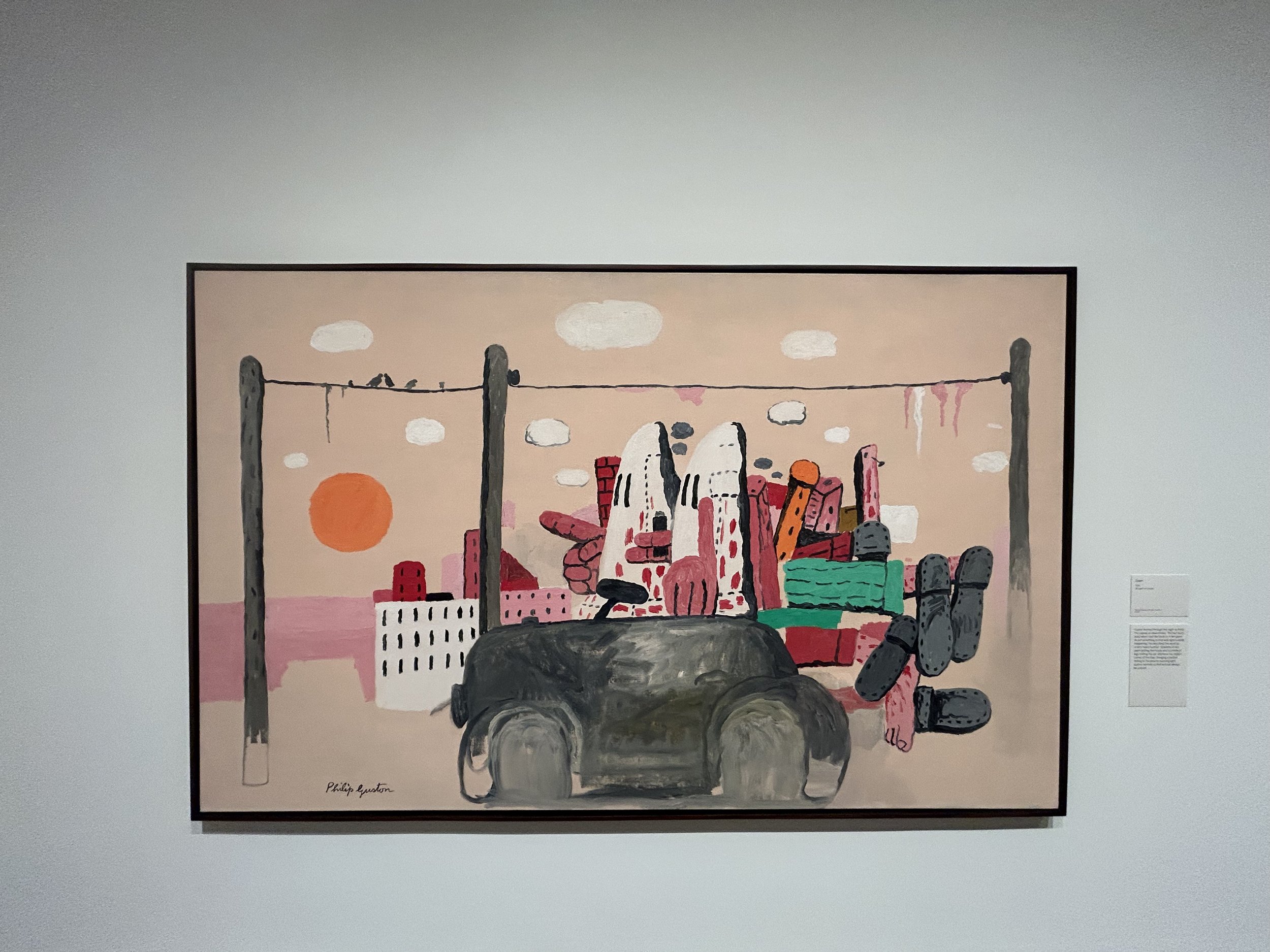
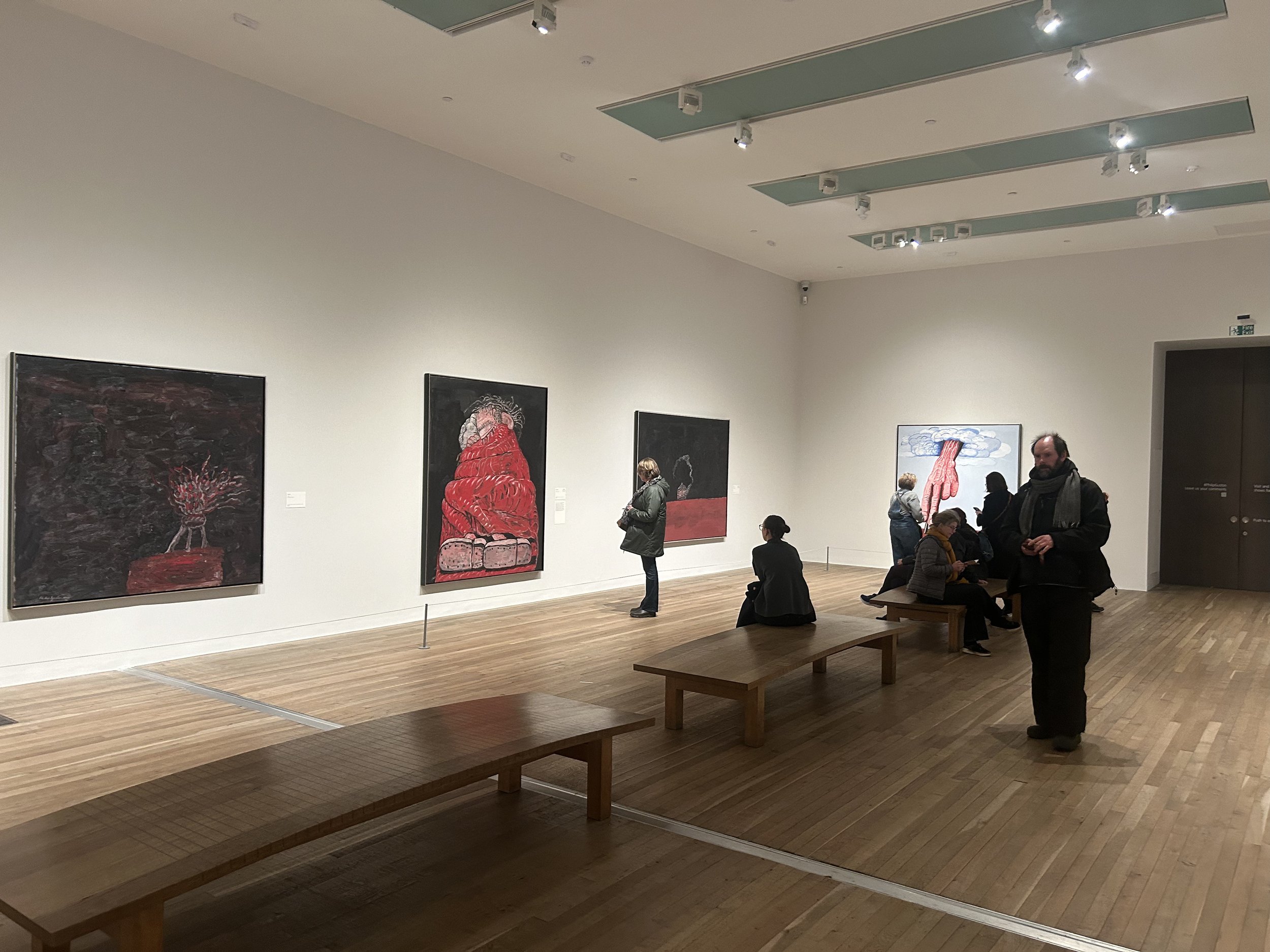
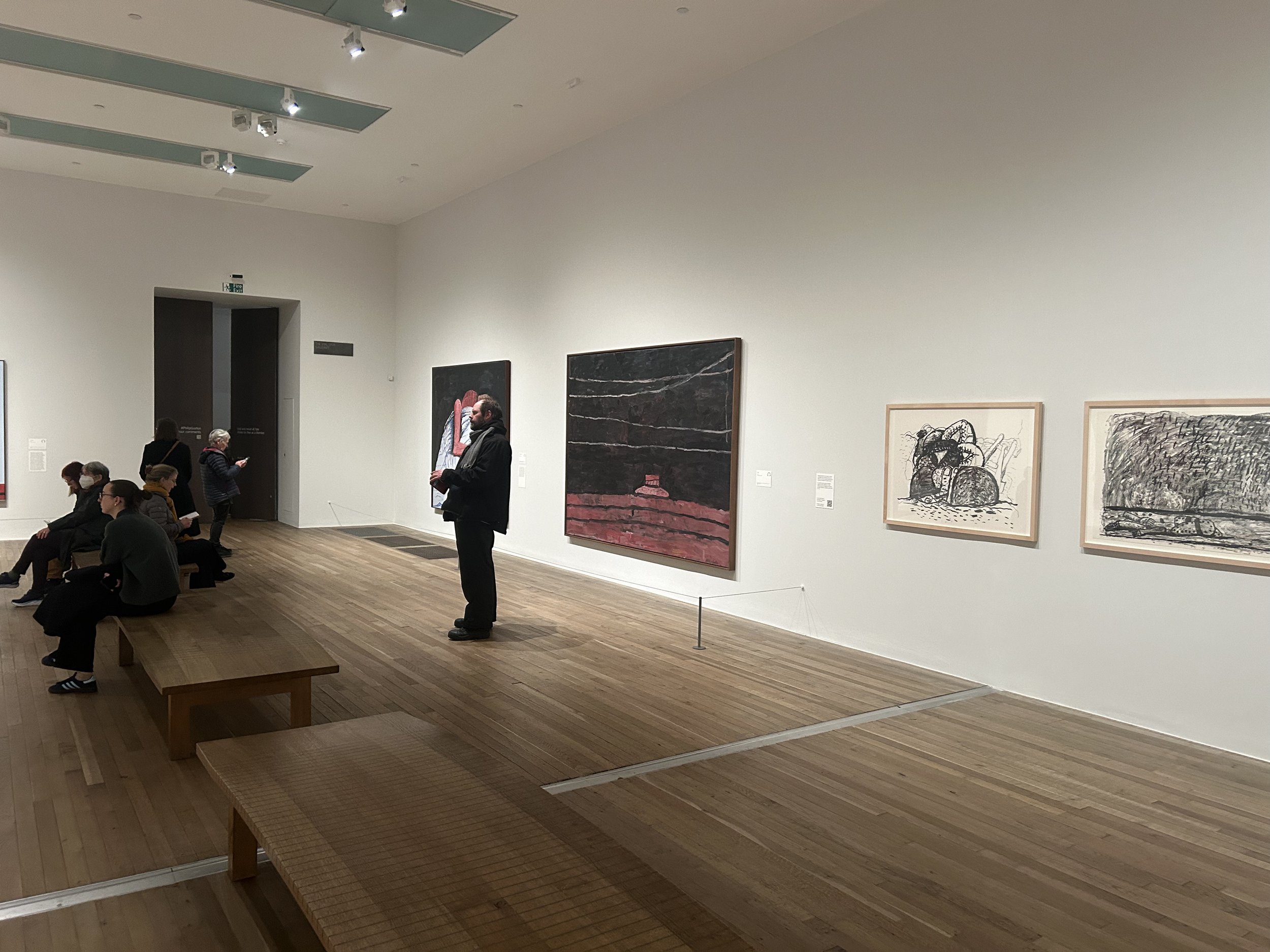
Philip Guston's exhibition is a captivating journey through the tumultuous landscapes of his artistic evolution. As an emerging artist, delving into Guston's 50-year career offers a profound insight into the transformative power of change, a sentiment he believed to be the ultimate technique to learn.
The exhibition immerses you in Guston's restless nights spent creating art that reflects a world in turmoil. "Legend," a poignant portrayal of the artist in bed surrounded by a nightmarish mix of symbols, captures the essence of his relentless creativity.
Guston's story unfolds through varying approaches to painting, encapsulating his philosophical and social concerns. Living through the upheavals of the 20th century, his works become a visual dialogue on wars, racial injustice, and societal unrest, prompting crucial questions about accountability.
The narrative takes a personal turn as we learn about Guston's early life, grappling with tragedy and turning to art as a means of expression. His engagement with politically charged art in the 1930s highlights a commitment to social issues, a theme that persists throughout his career.
Witness the artist's shift in the late 1940s during his European sojourn, where he faced a creative crisis and emerged with a renewed focus on abstraction. The vibrant scenes of 1950s New York come alive as Guston collaborates with other artistic luminaries, testing the boundaries of creation.
The exhibition reaches a turning point in the mid-1960s, marked by Guston's departure from color, adopting a more somber palette. His struggle with the recognizable becomes evident as he grapples with the responsibility of the artist to 'unnumb' oneself to the world's brutality.
Guston's commitment to political engagement remains evident, serving as co-chair for Artists for CORE in 1966 and responding to the tumultuous events of the late 1960s. His iconic hooded figures, reminiscent of the Ku Klux Klan, and reflections on the Holocaust become powerful symbols of social commentary.
In his later years, living and working in Woodstock, Guston's creative outpouring intensifies. The exhibition captures the prolific period, showcasing the uncanny imagery and introspective compositions that characterize this phase.
As an emerging artist, Guston's exhibition offers not just a chronological exploration but a deep dive into the struggles, transformations, and artistic philosophies of a seasoned creator. For a comprehensive review and insightful commentary on Guston's exhibition, visit our YouTube channel. Join us in uncovering the layers of complexity in Guston's work and how it resonates with the challenges and triumphs of the emerging artist's journey. Subscribe now to stay connected and enrich your artistic perspective.
Youtube Review URL Premiering 7th January: https://youtu.be/c_NuQp6jq4w
Unveiling Contemporary Art Studios: Elevate Your Artistic Journey
Embark on a transformative artistic odyssey with Contemporary Art Studios, a dynamic hub that transcends traditional boundaries. Our multifaceted platform offers a spectrum of services, providing artists with unparalleled opportunities to thrive and innovate in the ever-evolving world of contemporary art.
A Global Canvas for Creativity: At Contemporary Art Studios, we transcend conventional limits to celebrate the diverse talents and visions of artists from around the world. Our mission is to cultivate an environment that fosters creativity, collaboration, and the unrestricted exploration of artistic expression.
💡 Services Tailored for Artists: Diversity and Inclusivity: We embrace artistic diversity, providing a space for artists from various backgrounds, styles, and experiences. Our inclusive platform ensures every voice contributes to the rich tapestry of contemporary art.
Collaboration as a Catalyst: Unlock new realms of artistic possibilities through our active encouragement of collaborative projects. Connect with businesses, fellow creatives, and industry professionals to create impactful and innovative works.
Empowering Artists: Beyond being a platform, we serve as a support system for artists. Our Consultation and Advisory Services empower artists on their journey, providing guidance, insights, and resources to navigate the art landscape.
📖 Discover Through Our Magazine: Delve into the heart of the contemporary art scene with our online magazine. Featuring insights, artist spotlights, and thought-provoking articles, our magazine is a window into the vibrant and ever-evolving world of contemporary art.
Global Vision, Local Impact: Our vision is to redefine the boundaries of contemporary art, making it accessible, engaging, and a powerful force for positive change. From commission services to online art sales, collaborative projects, consultation services, and our enriching magazine – Contemporary Art Studios offers a comprehensive experience within the art world.
Connect with Contemporary Art Studios:
Art Commission Services: Explore the unique experience of commissioning artworks tailored to your vision, connecting directly with talented artists.
Online Art Sales: Immerse yourself in a digital art marketplace, discovering exceptional artworks from artists around the globe.
Collaborative Projects: Engage in projects that transcend individual creativity, opening doors to new artistic possibilities and expanding your creative network.
Consultation and Advisory Services: Receive personalized guidance and support on your artistic journey, from portfolio development to navigating the art world.
Experience Art Unfiltered: Our commitment to artistic exploration goes beyond traditional avenues. Contemporary Art Studios proudly presents a YouTube channel, where we document global exhibitions, share insights, and interview artists. Subscribe to witness the dynamic intersection of creativity and insight.
